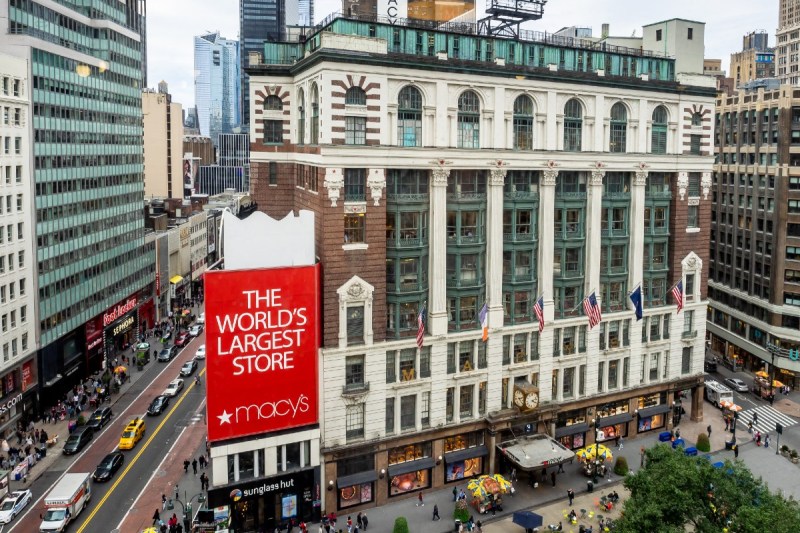Macy’s, an icon of American retail since 1858, continues to molt during dire times for retail outfits.
Macy’s recently announced that it would be shifting from serving well-heeled shoppers to dedicating a significant portion of selling space to bargain buys beginning this spring. They’ll accomplish this via “Backstage,” the retailer’s discount store-within-a-store, offering a mix of apparel, beauty products, housewares, pre-packaged food, and toys. Set to expand across the country, you’ll now be able to find colanders alongside Coach Bags, a stunning turn for what used to be a place that only catered to well-heeled shoppers.

“We’re fundamentally reimagining this business end to end, but at the core is the customer and how his or her expectations are evolving,” Macy’s CFO Adrian Mitchell told Bloomberg Businessweek on Jan. 28. “When we went into 2021, our thesis was that digital will continue to remain strong and stores would probably have a real tough time. What we saw is stores really rebounded, and digital didn’t miss a beat.”
After Macy’s posted a net loss of $3.9 billion in a pandemic-marred 2020, with most shoppers staying in isolation, the department store giant revealed that Q4 revenue rose 27.8% year-over-year to $8.66 billion in 2021. This was buoyed by digital sales that were up over 12% from the 2020 fourth quarter, and 36% over Q4, 2019.
“Our results in the fourth quarter delivered a strong end to a solid year. I am proud that Macy’s, Inc. outperformed expectations on both the top and bottom lines every quarter in 2021, despite COVID-19 related disruptions, supply chain issues, labor shortages and elevated inflation,” Jeff Gennette, chairman and chief executive officer of Macy’s, Inc. said in a press release. “Our business has momentum and is serving more customers at more touchpoints in their shopping journey.”
Mitchell told Fortune magazine that Macy’s is transforming and adapting to a new retail environment by “fundamentally changing the financial profile of the business by thinking differently about how we actually serve the customer, stay relevant to the customer, and grow market share,” the CFO said.
Early in 2022, for example, Macy’s already removed several flagship stores, more than 30 mall-based stores, and 10 distribution centers.
“The digital marketplace gives us the ability to carry a complete experience with many more items available to the customer without necessarily carrying the physical inventory,” Mitchell told Bloomberg. “We’re incredibly excited about the new store growth potential that we see in off-mall [stores]. A 30,000- to 50,000-square-foot Macy’s — one that’s in neighborhoods and power centers closer to where the customer lives, where the soccer game is, where work may be, where the grocery store is located — is the next evolution in our physical footprint.”
Macy’s Backstage has accelerated expansion to nearly 300 Macy’s stores nationwide. To support the growth of the off-price, business format, the store opened a distribution center in Columbus, Ohio, dedicated to expediting merchandise to Backstage locations nationwide.
“Macy’s Backstage inspires customers to express their personal style through its offerings of quality merchandise and brands at great prices, which is why we look forward to bringing Macy’s Backstage into more of our local communities,” Michael Hersh, Macy’s vice president of off-price, said in a press release. “We are especially excited to bring Backstage to our downtown stores in Chicago and New York City as the brand expands nationwide.”
In a turn indicative of leaner times, shoppers can still expect swanky apparel and designer shoes in addition to deals on an assortment of housewares, beauty, accessories, activewear, designer handbags, and much more.



